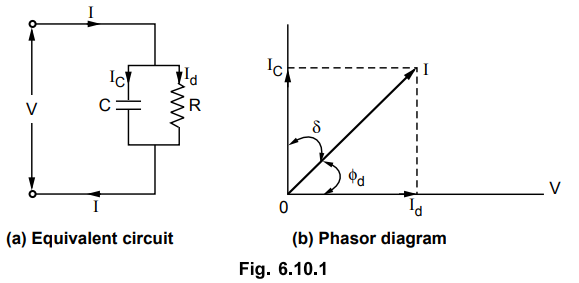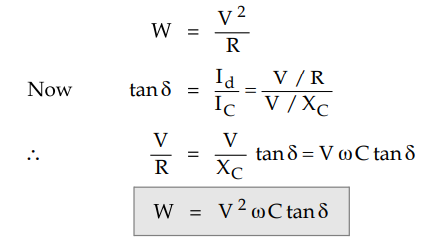Transmission and Distribution: Unit IV: Underground Cables
Heating of Cables
Copper Loss - Dielectric Loss - Sheath Loss
Question : 1. Explain the various losses in a cable responsible for producing heat.
Heating of Cables
Under working conditions, the
temperature of the cables increases due to the following factors,
1. The heat produced within the cables.
2. The dissipation of heat upto the
periphery of the cables.
3. The heat dissipation to the
surrounding medium.
4. The current carried by the cables.
5. The various load conditions like
continuous, distributed, intermittent etc.
Out of all these factors, the heat
produced within the cables is most important from the point of view of heating
of the cables. The heat is produced within the underground cables due to
following losses,
a. Copper loss which is also called I2R
loss or core loss.
b. Dielectric loss.
c. Sheath loss.
1. Copper Loss in Cables
The copper loss is determined by the
expression I2R. The resistance of the conductor changes as the
temperature changes. The resistance increases as the temperature increases.
Hence to find copper loss it is necessary to obtain the resistance value
correctly. It is determined by considering the following factors,
1. The resistance at any temperature t2
is given by,
R2 = R1 (1 + α1
Δ t)
where
R1 = Resistance at t1
α1 = Resistance temperature
coefficient of material at t1
Δ t = Temperature rise
So knowing R1 i.e. resistance
at ambient temperature and assuming temperature rise of about 50 oC
the resistance is determined.
2. The length of outermost strand is
more than the central strand. To allow for stranding, the resistance value
calculated as per the central strand is multiplied by 1.02.
3. The effective area of cross section
is smaller than the actual section hence the resistance value is further
increased by multiplying it by 1.02.
Thus finally core losses are determined
as I2R where R is effective resistance considering all the factors
discussed above.
2. Dielectric Loss
There exists a capacitance between a
conductor and the sheath, with a dielectric medium in between the two. This is
represented as C. The leakage resistance is denoted as R. The equivalent
circuit of the cable is a parallel combination of R and C. So there are two
currents, one perpendicular to voltage V which is leading capacitive current Ic
while other is in phase with voltage V which is resistive current Id
representing dielectric loss.
This is shown in the Fig. 6.10.1 (a) and (b).

The dielectric loss is loss due to
leakage resistance given by,

where
δ = Dielectric loss angle in radians
Generally δ is very small and hence tan δ
≈ δ . For low voltage cables dielectric loss can be neglected as it is small
but for high voltage cables it must be considered.
The angle ϕd is the power
factor angle of dielectric,
cos ϕd = cos (90 - δ) = sin δ
It depends on the temperature and
voltage stress to which dielectric is subjected.
3. Sheath Loss
In a.c. transmission, alternating
currents flowing through the cable produce pulsating magnetic field. This
electromagnetic pulsating field links with the lead sheath and induces current
in it. The value of this current depends on the frequency of pulsating field,
sheath resistance, arrangement of cables and sheath conditions whether it is
bounded or unbounded. These sheath currents produce the sheath losses.
There are two types of currents in the
sheath,
1. Sheath eddy currents having both
inword and outword directions and flow totally in the sheath of same cable.
2. Sheath circuit currents which flow
from sheath of one cable to the sheath of other cable.
The unbounded cable means having one end
or no ends, electrically shorted hence sheath circuit currents are absent in
unbounded cable. The bounded cables means the two different cables have a
sheath electrically connected at both the ends hence both the types of currents
are present in them.
The approximate formula to calculate
sheath losses due to sheath eddy currents is suggested by Arnold as,

where I = Current per conductor in Amp
rm = Mean radius of sheath
RS = Sheath resistance in Ω
d = Spacing between conductors
These losses are practically very small
and hence generally neglected.
Key Point
Thus core loss, dielectric loss and sheath loss together constitute to the
heating of the cables.
Review Question
1. Explain the various losses in a cable responsible for producing heat.
Transmission and Distribution: Unit IV: Underground Cables : Tag: : Copper Loss - Dielectric Loss - Sheath Loss - Heating of Cables
Related Topics
Related Subjects
Transmission and Distribution
EE3401 TD 4th Semester EEE Dept | 2021 Regulation | 4th Semester EEE Dept 2021 Regulation
